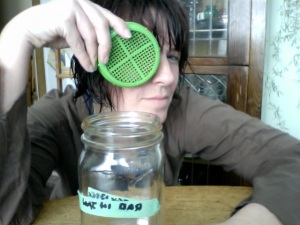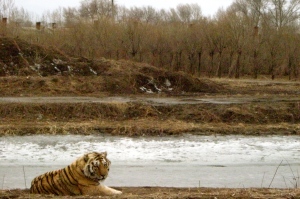Sprouting for the Locationally Challenged

I see sprouty things
Let’s say you have found yourself in a nutritionally awkward position- maybe you’ve been on the road just a little too long and are sick to death of momos or mie goreng (or you are vegetarian so you couldn’t even have the momos), or perhaps you’ve found yourself in a tiny kitchenless student housing bedsit somewhere in Beirut while doing your MA in Classical Arabic, or like me, you’ve settled in to a pleasant flat in urban China with all mod cons but no access to veggies that haven’t been drenched in dubious chemical fertilizers and pesticides. Let’s say you don’t want a pint of Guinness to be your main source of nutrition on an average day. What can you do that doesn’t take up too much time or space? For one, you could learn to sprout.
What is Sprouting and Why Should I Even Bother ?
Sprouting is basically home farming on a very small scale. We’re talking jam-jar sized farms, which are very portable and which can be easily nurtured and maintained, even if you are on the road, provided you have regular access to clean drinking water. What you are doing is taking the dried seeds of something that you would normally eat if planted, grown and harvested (say, broccoli, soy, radish, barley, buckwheat) and waking them up just enough to burst open with lovely little nutritionally dense buds that contain all the potential of that mighty large vegetable in one small sprout. If you can get your hands on a packet of organic seeds, you’re set.
What Do You Need?
You need seeds, first of all. These seeds should be kept in bug-free containers. If possible, they should be kept away from extreme temperatures. Check the seed packet to make sure they are still viable and haven’t yet expired. I have tried in vain to sprout long-dead fenugreek. Try to get organic seeds.
You need a wide mouth canning jar with a screen lid (see photo). You can find these at most hardware stores. If you can’t find a screen lid, make one from mesh held down by the twisting outer rim of a jam jar lid.
You need somewhere to drain the jar two or three times a day.
You need clean water.
How Do I Sprout My Seeds?
First of all, check to see if there are any stones or twigs or dirty amongst your seeds. Pick them out and give a seeds a rinse in the jar, draining it through the screen lid. Add water for soaking then soak away for the recommended time (more on that later). After the soak, turn the jar over and drain the seeds. After they have drained, rinse them again and leave them propped up at a 45 degree angle to drain again. You will need to do this rinse and drain routine about two or three times a day until they are ready for eating. Make sure they are well drained or else they’ll get all soggy and start rotting. Keep them away from direct sunlight. Once they have sprouted, keep them in a refrigerator and use within a few days.
There are other ways to sprout, such as using cloths or sprouting bags or trays, but I’ve found using the jar to be the handiest and most reliable method.
When Can I Eat Them, and How?
This is really up to you and your sprouts, as the different seeds and growing conditions will vary, as will your taste buds. I’m a big fan of sprouted radish, which is fiery hot and only needs about 8 hours of soaking and a day more to sprout. I read somewhere that a good way to tell if a sprout is ready if the growing root is about the same length as the original seed.
You can use sprouts in salads as a topping, or in a sandwich instead of lettuce. I’ve thrown them on crackers with a nice goat cheese. If you sprout grains like oats or wheat, they can be really nice for breakfast. I’m a big fan or red clover sprouts straight up out of the jar.
Happy sprouting!
Links:
How to Sprout on the Road
How to Eat Sprouts
Pick Your Favourite Sprouts to Eat (Pdf)
Living Foods (How To Sprout 101)








